Project LoopS
A Study on mesh topology using a Lowpoly Base mesh and Mesh subdivision algorithms and Mesh relaxation techniques. The goal of this project was to explore the fabrication implications of mesh face configurations and orientations as simple quad faces and triangular faces. And a focus on the direction of flow lines in the mesh towards fabrication implications.
Mesh explorations
Series one – Branching Morphologies.
We begin exploration with mesh typologies that resonate with branching modules with two levels of Catmull-clark subdivision and fixed corners and several different anchor points.
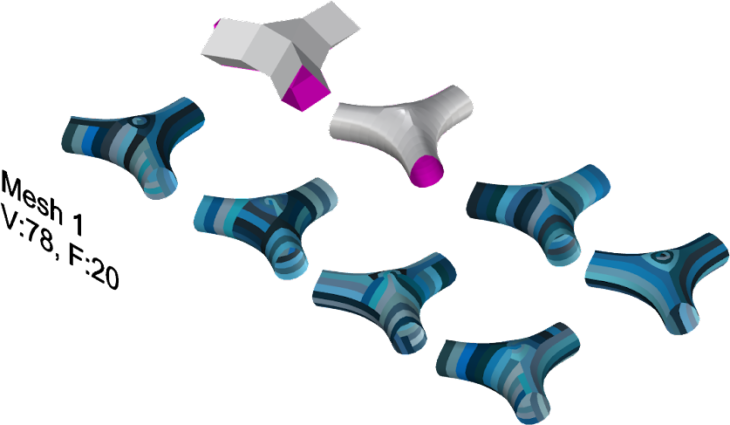
Branching node one

Branching node two
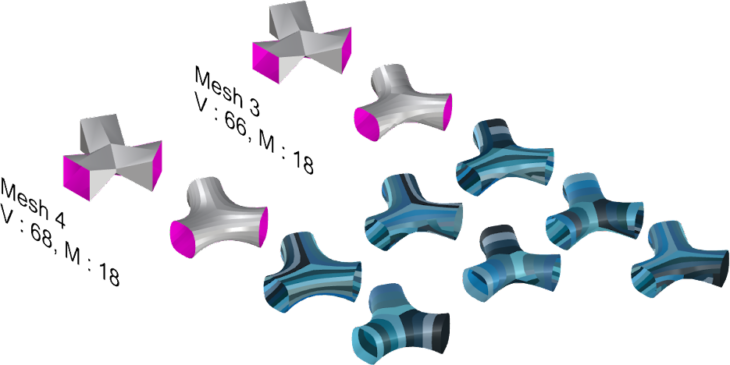
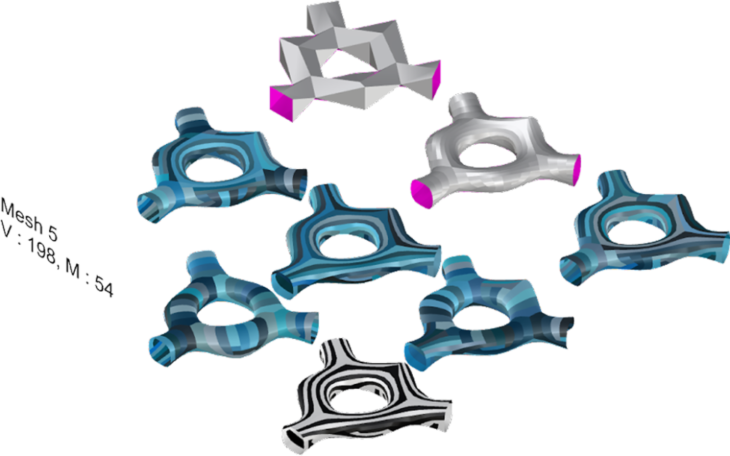
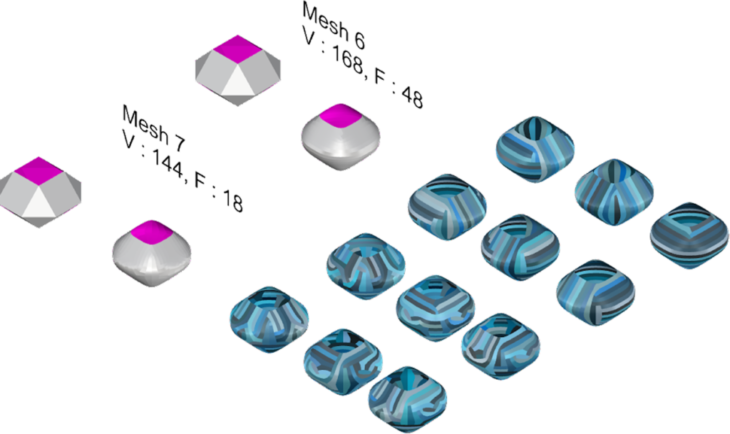
Branching Nodes
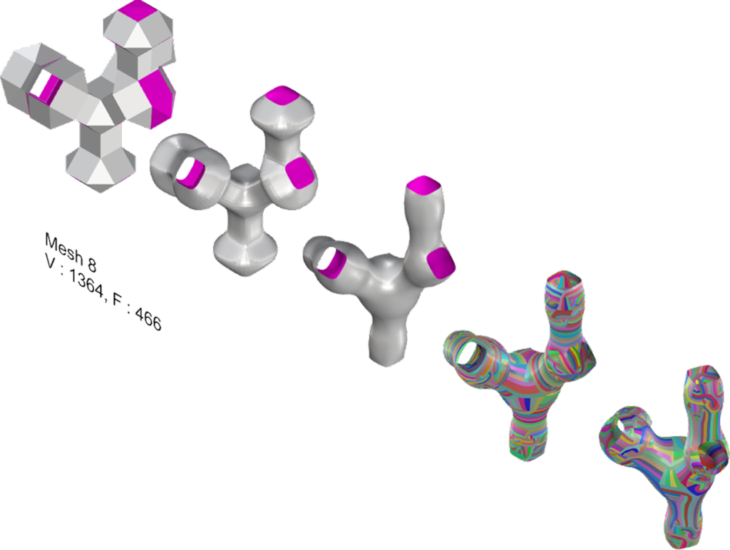
Branching Morphology- Application a to a larger number of mesh faces
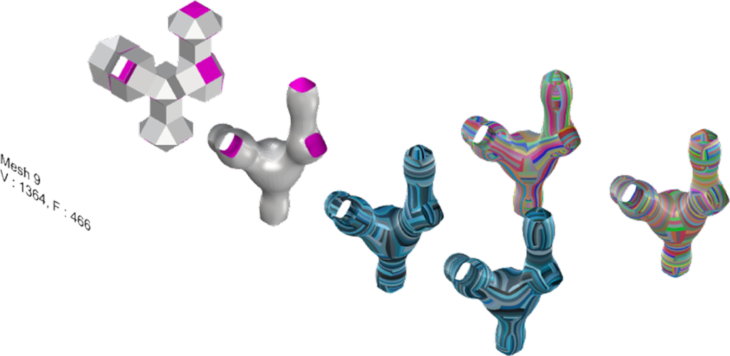
Series Two
Base Mesh- Looping quad meshes. (Mesh topology exploration)
We look at using quad meshes as a driving force of the design, the exploration yields several conclusive results in manufacturing and design strategies. Starting with the Exploration of different Mesh Geometries, choosing one of these meshes for the Mesh Topologies Exploration and later build a Pavillion with the chosen mesh and topology.
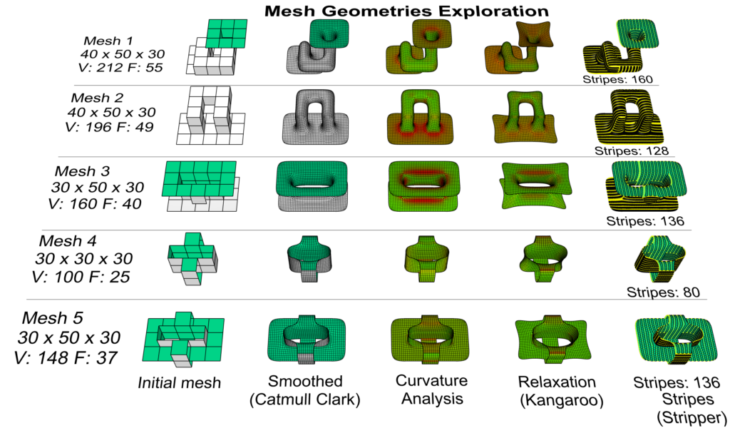
Mesh Geometries Exploration
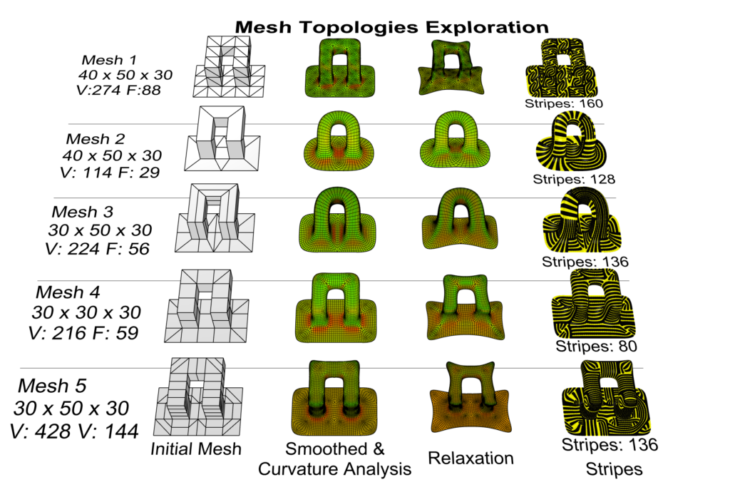
Mesh Topologies Exploration
A proposed Pavillion towards this exploration

The Base Mesh: 4,5 x 4,5 x 4,0 m (V: 672 F: 168)
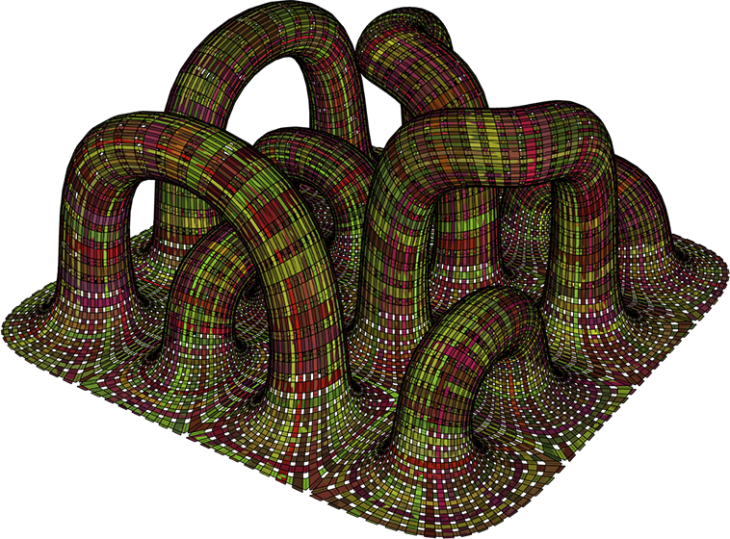
Possible waft and weft configurations
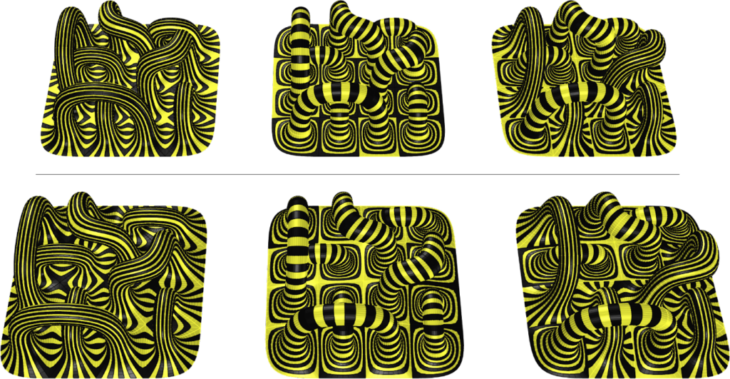
Viable Mesh topologies for Membrane structures
Possible fabrication Guidelines
We look at constructing frames which support tensile elastic membranes that can be tactile and opaque creating spatial opportunities for play and interpretive adventure, while aslo taking in mind childproofing.

The proposed frame consists of 168 aluminium channel members ,which includes Frame geometry for the Barrisol membrane and 150 Vertical reinforcing members 7 supporting frames 25 truss struts along the connectors , Dimensions 4.5*4.5*4 m.
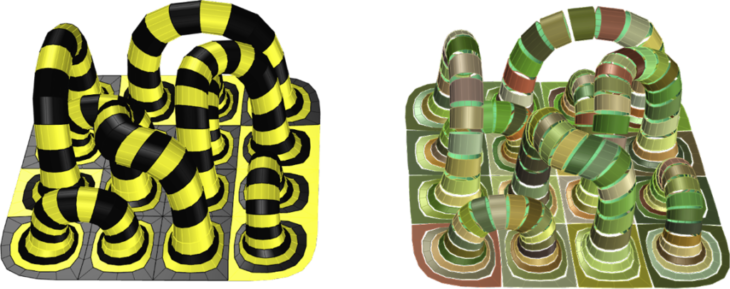
Sheet Striping towards this exploration. 96 Strips of Tensile Membrane Dimensions 4.5 * 10*10 m
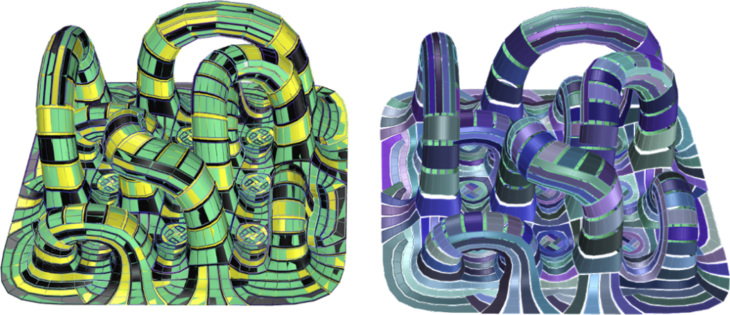
416 Strips of tensile Membrane Dimensions 4.5 * 10*10 m
Key learnings from the study:
-Manipulation of mesh topology through mesh subdivisions resulting in fabrication implications.
-Quantification of design elements and possible connection strategies.
-Graphical and geometric composition of mesh faces in the design
Project LoopS is a project of IAAC, Institute for Advanced Architecture of Catalonia developed at Master in Robotics and Advanced Construction in 2021 by students Vincent Verster and Libish Murugesan, and faculty: Andrea Graziano, Eugenio Bettuchi